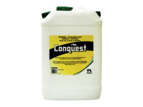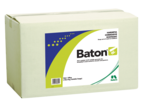Spray weeds in spring for better quality grazing
1 September 2017
10 / 10 People found this article helpful
Looking for ways to get more out of your existing land and pasture this season, without breaking the bank? A good spring weed spray programme is worth considering.
Spring spraying is particularly valuable for paddocks damaged by stock during the wet autumn and winter conditions or paddocks that missed out on normal maintenance sprays earlier in the year because they were too wet for contractors to get onto.
In any case, it’s a good idea to check weed levels now and get on top of them early. By the time you see weeds flowering in summer it’s much harder (and more expensive) to control them.
Different types and sizes of weeds require different control strategies so it’s important to work out what each paddock requires. Typically, spring weed spraying falls into one of two categories:
1. Large, mature and/or multi-crown weeds which are hard to kill
Ragwort and thistle are the main issue here and spot spraying is recommended for these. The chemicals required to kill big gnarly weeds can damage clover so accurate and careful application is essential. Conquest® is very effective for this type of weed control. It’s fast-acting and grass friendly, so it won’t leave brown patches in your pasture. It is also very cost effective and it takes out awkward weeds that other herbicides struggle to control, including horehound, inkweed, cape weed, goats rue, fennel and hemlock, docks and sorrel. Sprayed weeds rapidly show signs of herbicide application, and full brownout can occur within weeks, so you see results fast. Conquest has short-term residual soil activity which suppresses weeds that try to germinate around the area that has been treated. You can use it for brushweed control as well.
2. Young, spring-germinating seedling weeds which are still small
Common examples include pennyroyal, water pepper, willow weed, buttercup, fleabane, hedge mustard and oxeye daisy. For these weeds, the whole pasture is usually sprayed using chemicals that are kinder to clover. Valdo®, Baton® and Bonza® are widely used for this situation, because they are designed to kill broadleaf weeds while the plants are still small. Correct spray timing is a must however and so is accurate weed identification to ensure the right product or products are used. Paddocks should be grazed before spraying to expose target weeds and reduce clover leaf area to minimise clover damage. Let the paddock freshen for two to three days and aim to spray as soon as possible thereafter, weather permitting. Wait until the grazing withhold period (14 days for Valdo) is finished before grazing, to allow herbicides to move through the weed plants.
To find out more about which broadleaf weed herbicides are right for your existing pastures this spring, contact your local Fonterra Farm Source TSR today. They will also be able to help identify which weed species are present in your paddocks.
®Conquest and Baton are registered trademarks of Nufarm Australia Limited. Valdo and Bonza are registered trademarks of Nufarm Limited.
Article supplied by Nufarm



